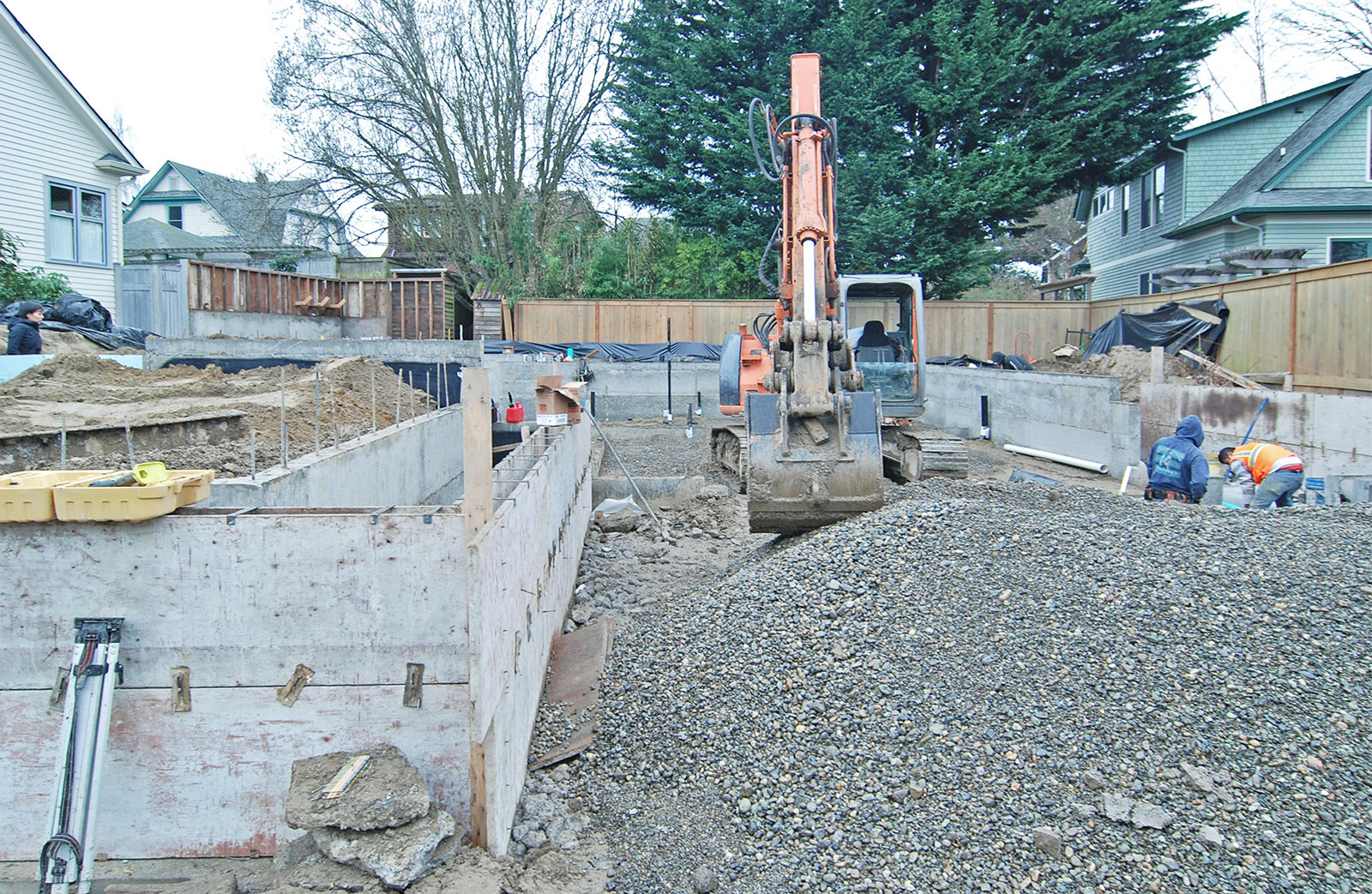
[All images by BUILD LLC]
As a design-build firm that cares deeply about the environment, we’re advocates of sustainability methods that have an honest and measurable impact. In our experience, these methods aren’t necessarily the heavily marketed gadgets or the sensational design concepts. More often than not, they’re quiet and practical techniques that disappear into a finished product. We refer to these less glamorized techniques as the down and dirty sustainability methods.
One of the heavy lifters of this category is maintaining the existing concrete foundation of a project rather than demolishing it and constructing a new one. We’ve saved dozens of foundations over the course of our practice and most projects start out with a phase of evaluating an existing structure to determine how much can be saved. Reusing an existing foundation is high on our list of sustainable practices for a number of reasons, one of which is measurable in the saving of energy. We’ve never actually sat down and penciled it out, until now.
Today’s post runs through a “back of the envelope” calculation of how much energy a typical new residential foundation requires. Take this math with a grain of salt as there are many variables for which we’ve used educated averages. This approximated calculation illustrates the energy consumption and subsequently illustrates the energy savings of maintaining an existing foundation. It’s also worth noting that saving an existing foundation still requires a bit of concrete work, typically to repair an older foundation or simply bring it up to some of the modern day standards.
If you’d like to skip the math and simply get to the conclusion, scroll on down to our summary below.
THE SAMPLE PROJECT
Because it’s a good representation of the work we do, we chose the Case Study House 2016 (CSH2016) for the cost analysis of a new foundation. The project is one of our most recent, so the quantities and costs are up to date and the entire foundation was replaced, as the existing foundation was unusable due to the lack of reinforcing steel common in the first half of the 20th century. The CSH2016 footprint is 1,450 square feet which translates to homes in the 2,500 – 4,000 total square foot range once all the floors are added up. The dimensions are roughly 36’ x 40’ which also relates well to urban lots.
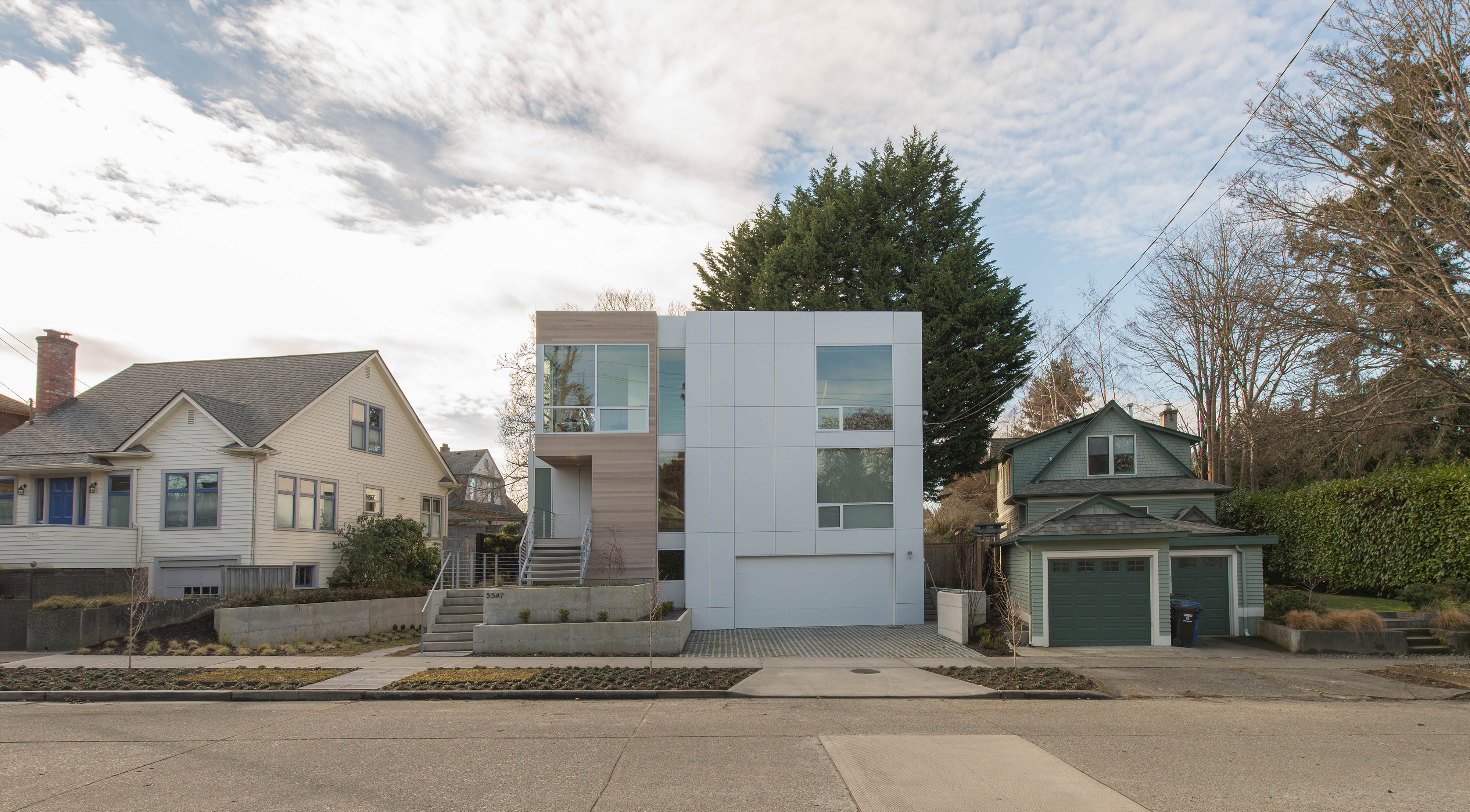
EXCLUSIONS
Our analysis takes into account the direct energy used to remove an existing foundation and construct a new one. This involves the manufacturing of raw materials, transportation, and the on-site construction. There are secondary factors not accounted for in this math, such as the energy that may be required to process the existing soil and concrete at the recycling facility and the energy required to manufacture reusable supplies like the concrete formwork. The math also focuses purely on fuel based energy and does not account for natural resources such as water consumption or manual labor. While these are important factors, they are a different, more complicated, equation (possibly for another blog post).
With that, let’s get to some simplified calculations:
UNITS
Because British Thermal Units (BTU) are a relatively universal and translatable measure of energy, each category below is converted to BTUs.
DEMOLITION OF EXISTING FOUNDATION AND EARTHWORK
The fuel for a 33k excavator over (10) typical work days at 30 gallons of gas per day equals 300 gallons. At 114,000 BTUs per gallon this energy translates to 34,200,000 BTUs.
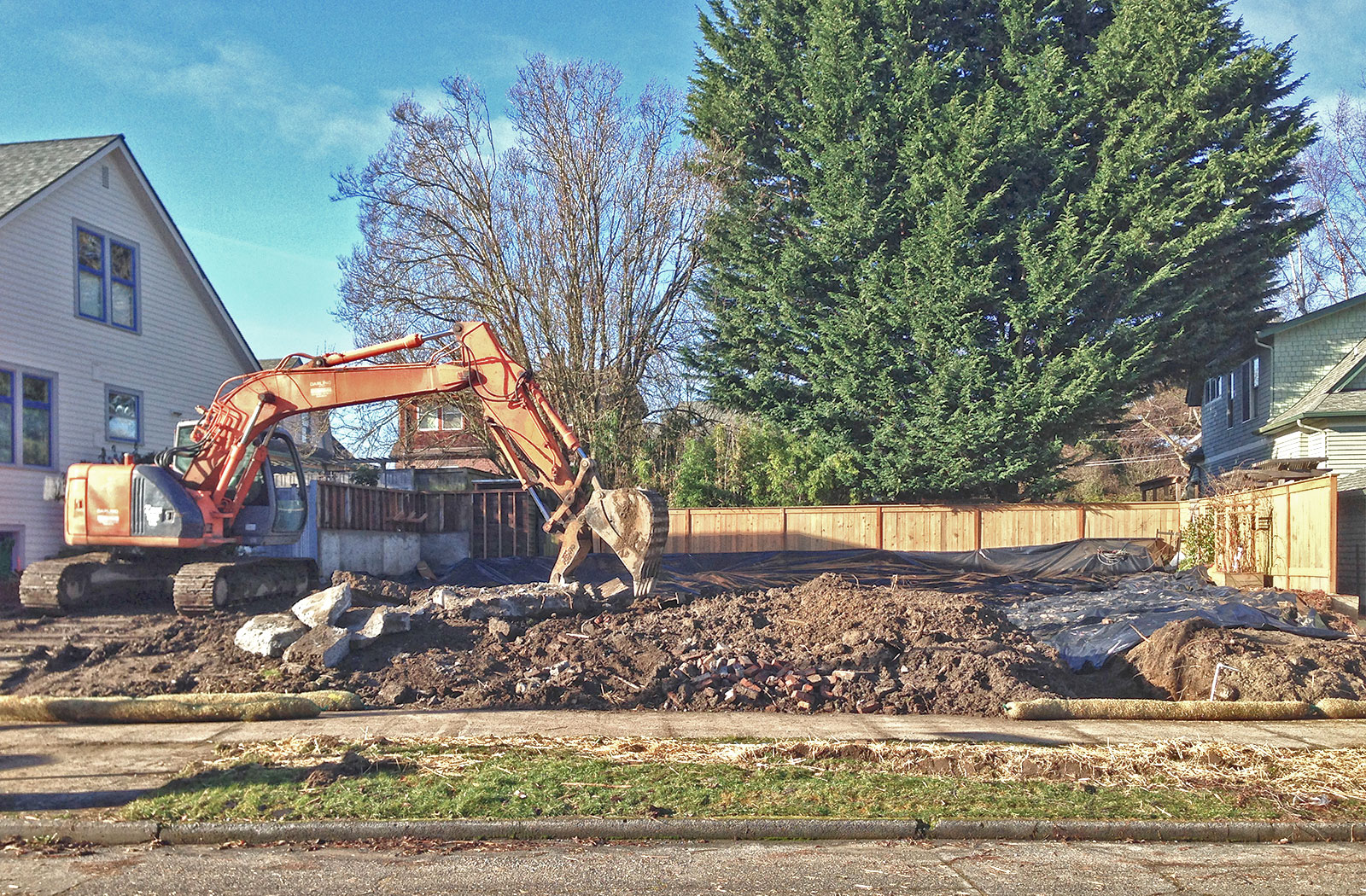
SOIL TRUCKING
Trucking 15 loads of soil 41 miles per load, each way equals 1,230 miles round trip at 6 miles per diesel gallon which equals 205 gallons or 26,547,500 BTUs.
This amount is likely higher than what it would be for a suburban or rural project simply because more travel time is required to get out of the city to the appropriate disposal sites.
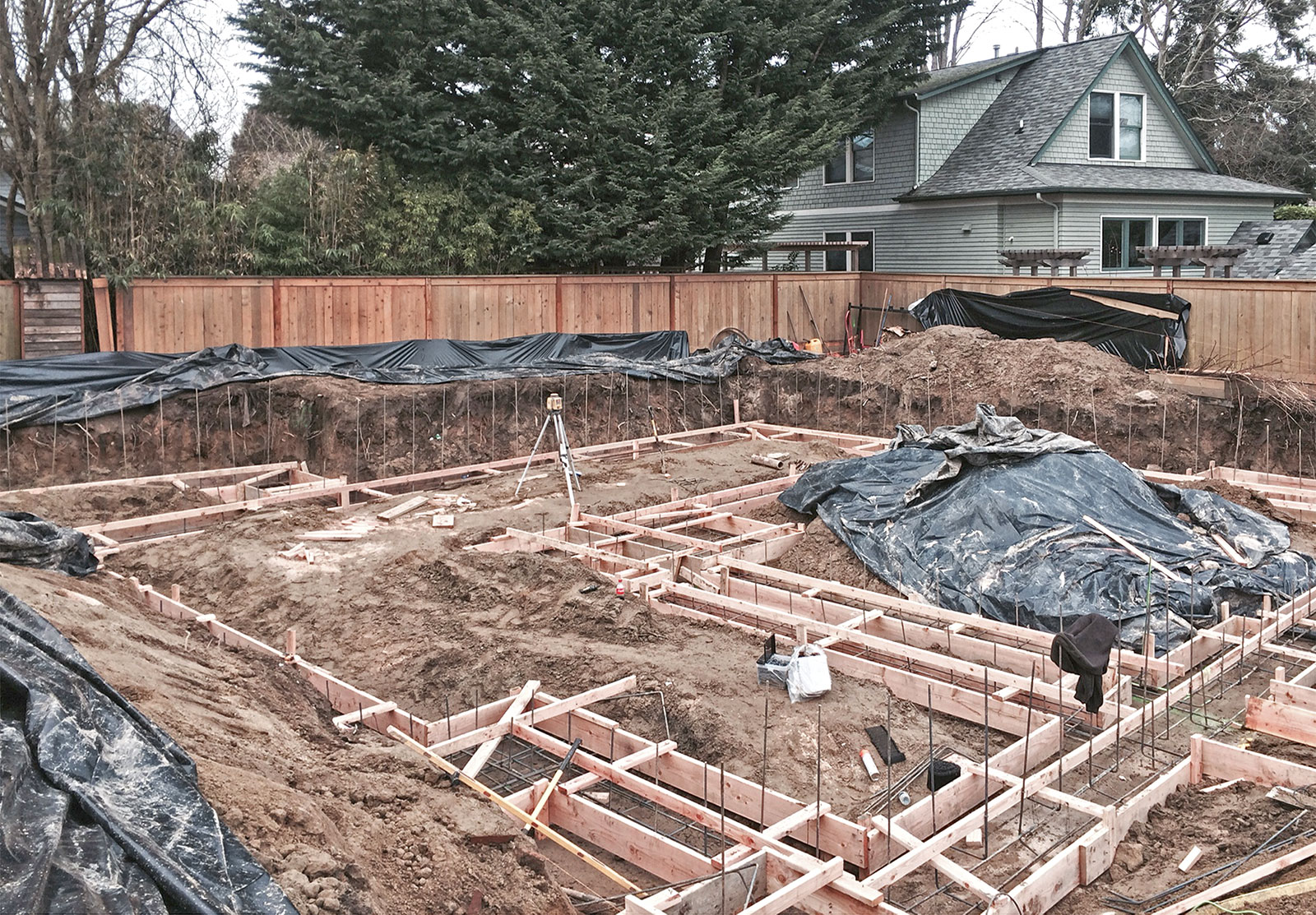
CONCRETE PRODUCTION
We used a cross section of a typical 18” wide x 8” deep residential footing and 3’ tall foundation walls to provide an average for varying foundation configurations including retaining walls, low stem walls and interior footings. We also added a 4” slab on grade adequate for a 2-car garage. Concrete work at the landscape was excluded from the calculation. This method of averaging totaled 660 cubic feet of concrete and at 150 lbs/cf it amounts to 99,000 lbs or 49.5 tons of concrete. Concrete requires 133.9 kWh per ton to produce, translating to 6,628 kWh or 22,615,680 BTUs.
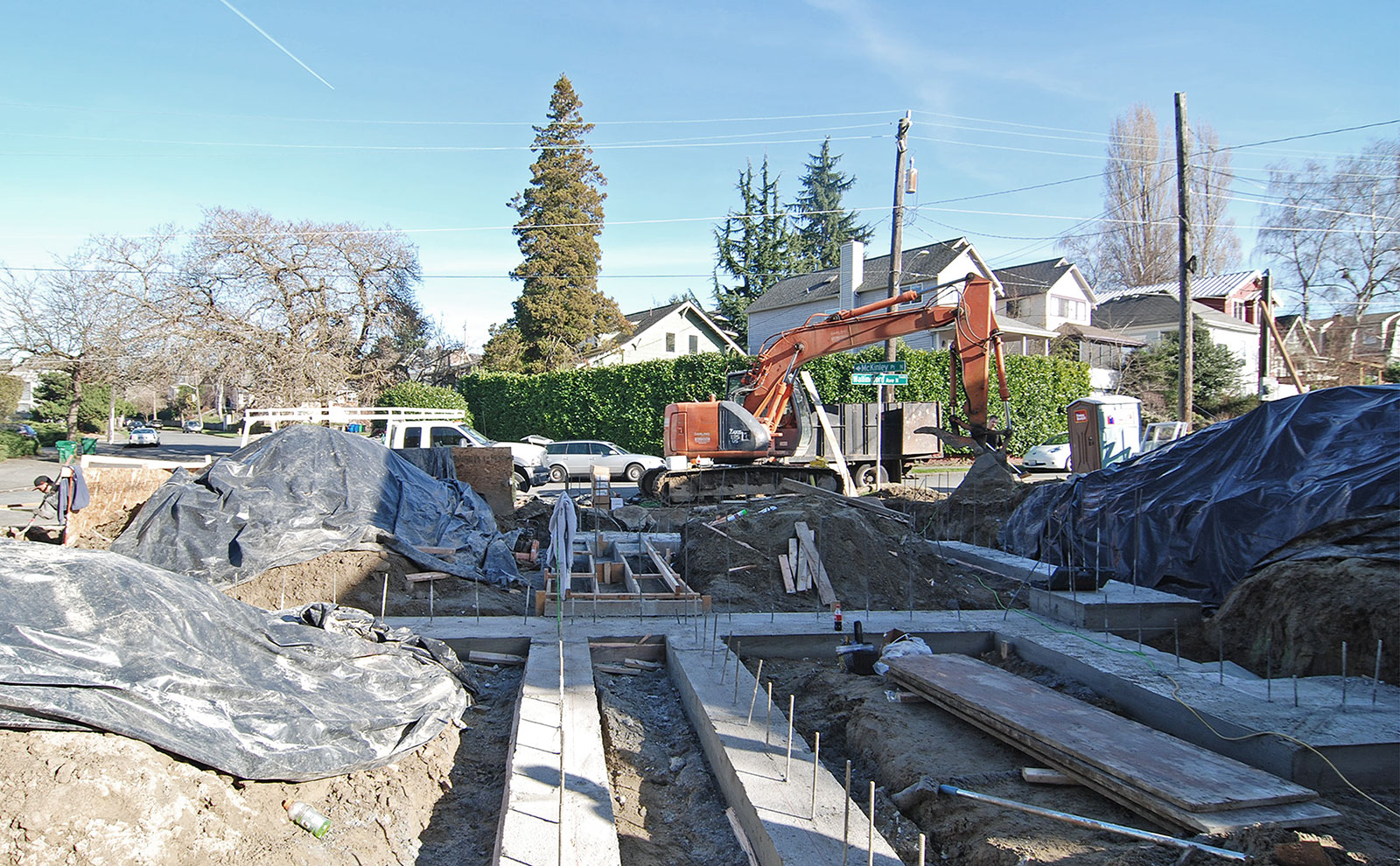
TRANSPORT OF NEW CONCRETE
At 10 cubic yards per truck, 3 concrete mixers are required to deliver the required concrete to the site at a distance of 6 miles per load round trip. This totals 18 miles at 3.3 miles per gallon totaling 5.5 gallons or 627,000 BTUs.
CONCRETE PUMPING
3 trips at 14 miles per roundtrip equals 42 miles at 6 miles per gallon which equates to 7 gallons of gas plus an additional 7 gallons for the site pumping totaling 14 gallons total or 1,596,000 BTUs.
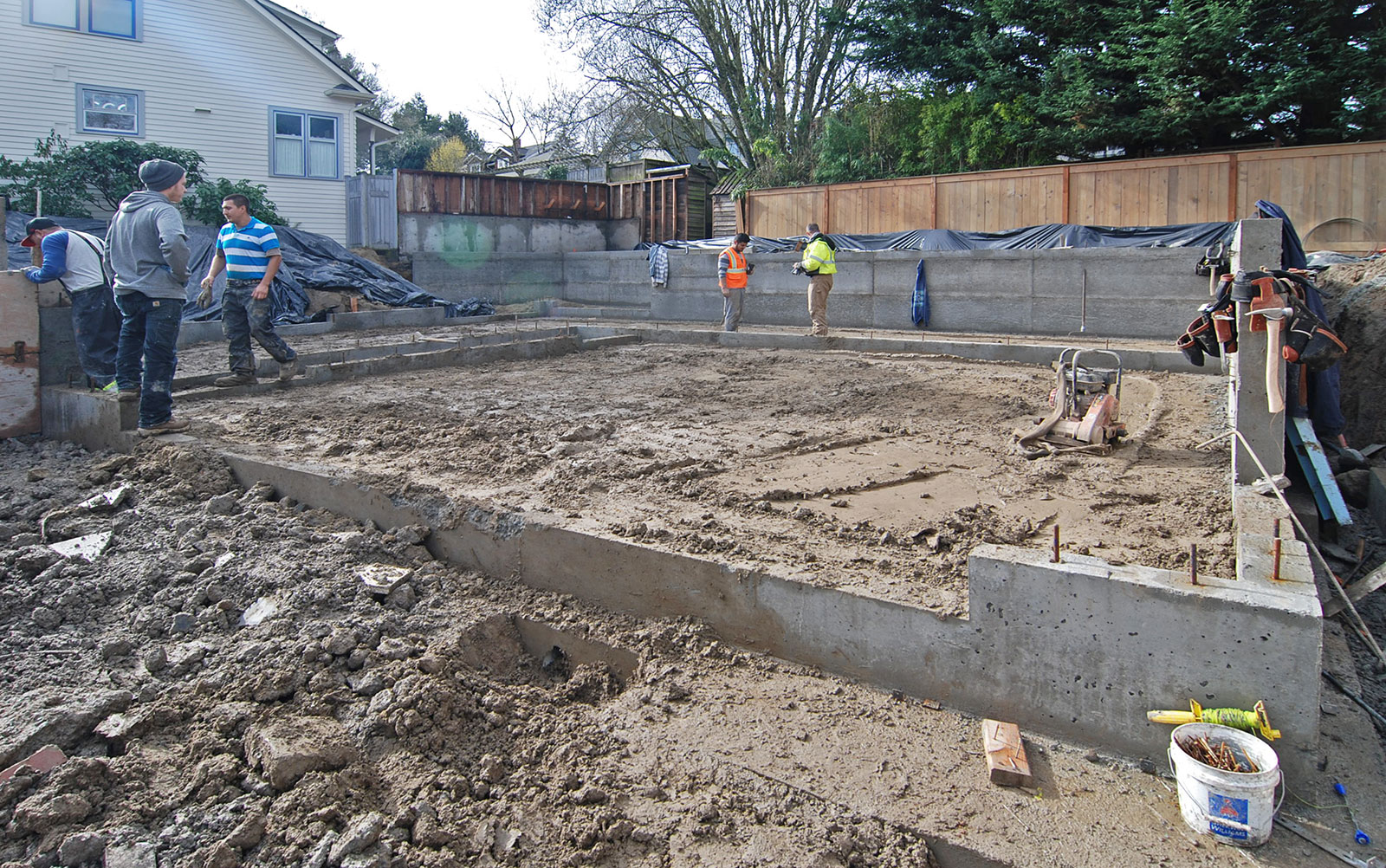
MANUFACTURING OF REINFORCING STEEL
The concrete wall, footing and slab on grade consume 2.2 cubic feet of steel or 1,078 lbs at 490 lbs per cubic foot. Based on an energy usage of 770 kWh per shipped ton of steel, this amount of steel requires 1,416,141 BTUs to produce.
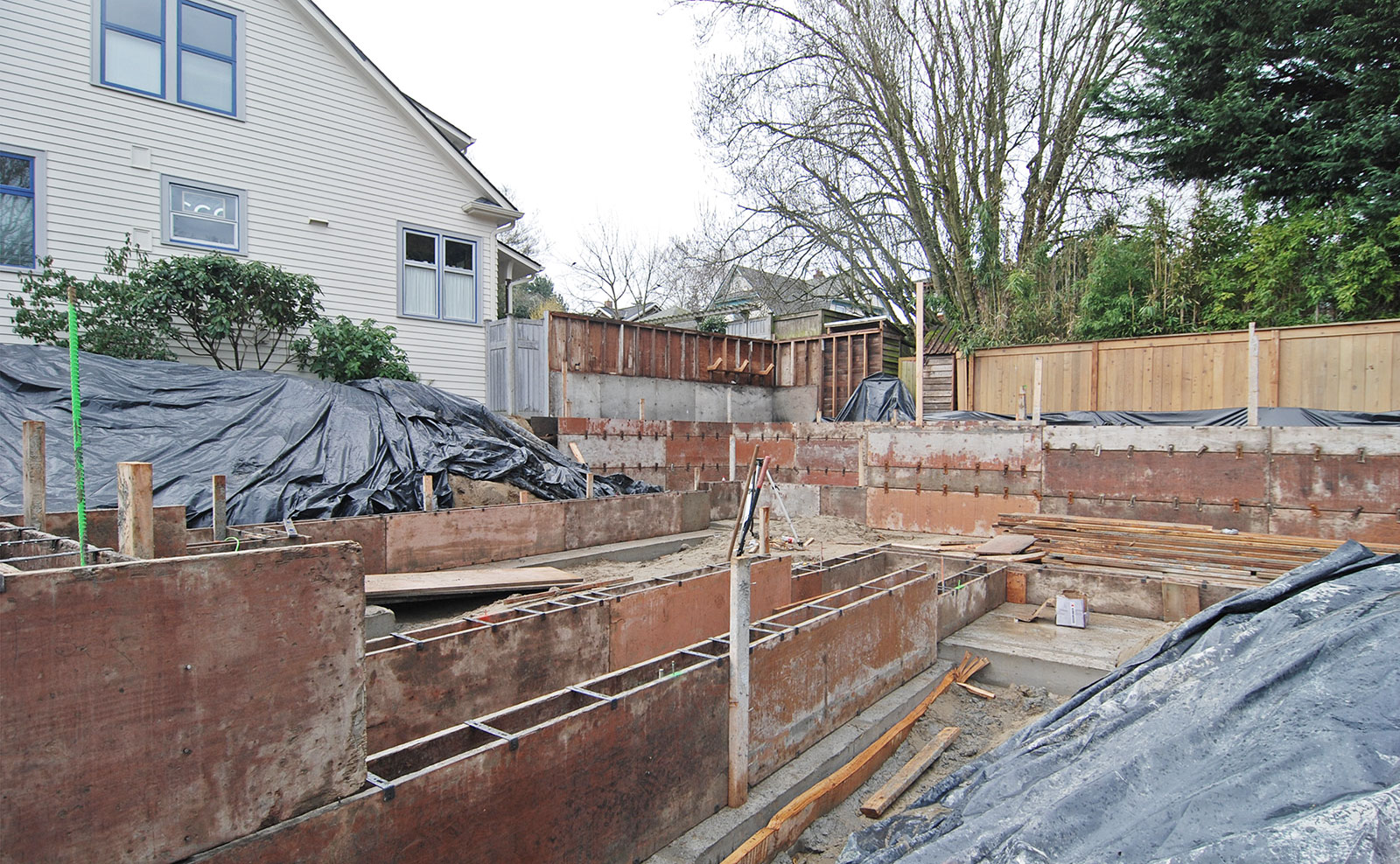
TRANSPORTATION OF STEEL REINFORCING
We used the one-way trip of 25 miles, since the steel deliveries likely happen in conjunction with combined deliveries for other jobs. At 8 gallons per mile this equates to 3 gallons or 342,000 BTUs.
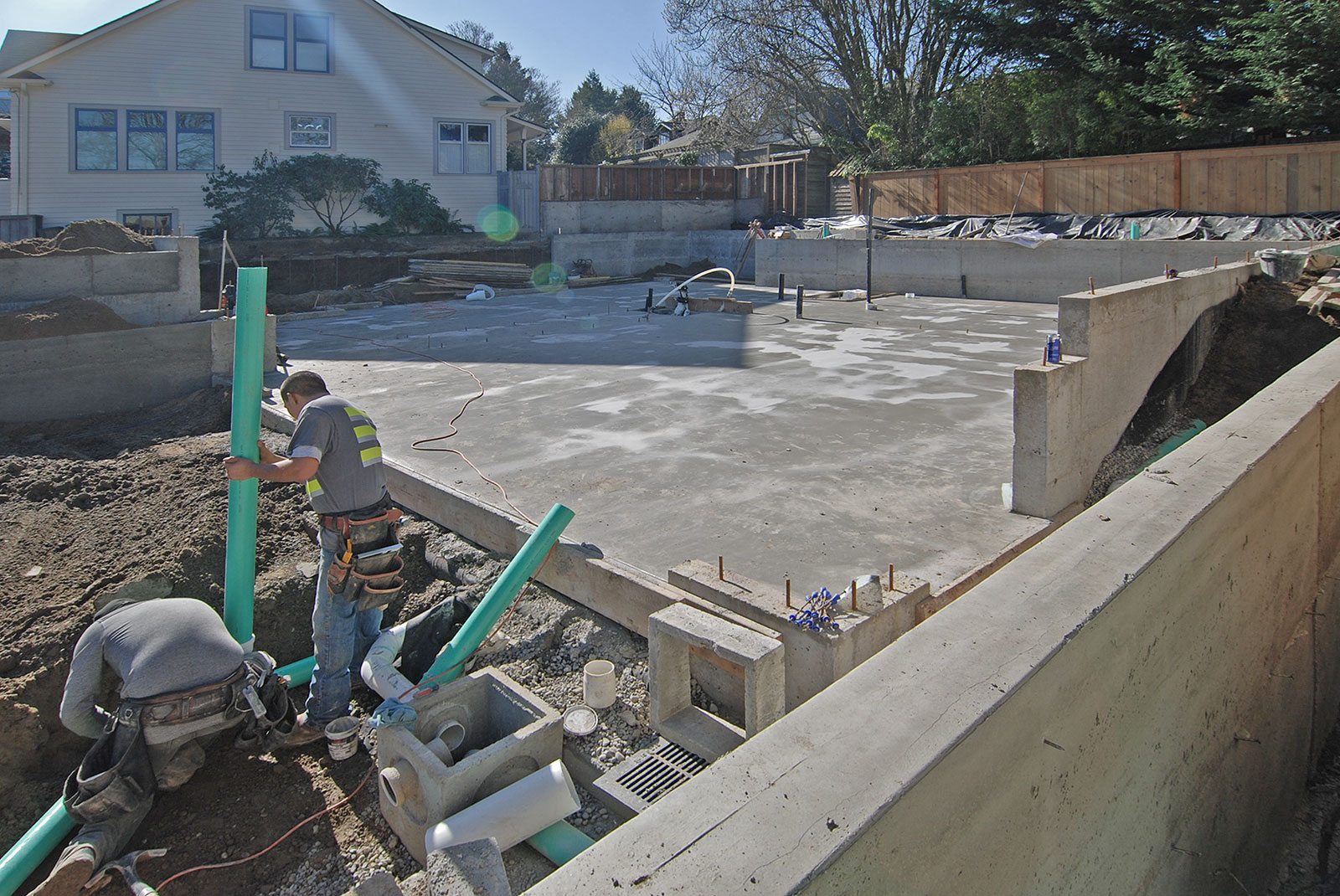
SUMMARY
The 7 categories above account for the primary energy consumption of removing an existing concrete foundation and replacing it with a new one for a typical size home in the Seattle metro area. The total of these categories equals 87,344,321 BTUs.
Because BTUs are still a relatively abstract measurement for most people, we compared it to the electric consumption of the CSH2016. On average, the CSH2016 uses 820 kWh of electricity each month or 2,797,957 BTUs. Comparing the two figures tells us that energy consumed to remove and replace the foundation is equal to two and a half years’ worth of electricity consumption at the CSH2016 -not an insignificant amount.
It’s also worth noting that the energy savings is just one aspect of this topic. Down-and-dirty sustainability methods also limit waste, create less mess on site, keep clear of complicated permitting requirements and can speed up the construction schedule of a project. Most importantly to us: decisions like this reinforce sensible design. It values people’s time and honors the work that has already been completed in the built environment.
Cheers from Team BUILD





